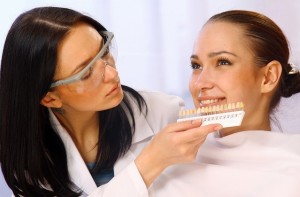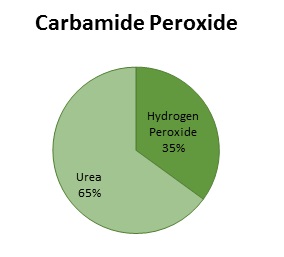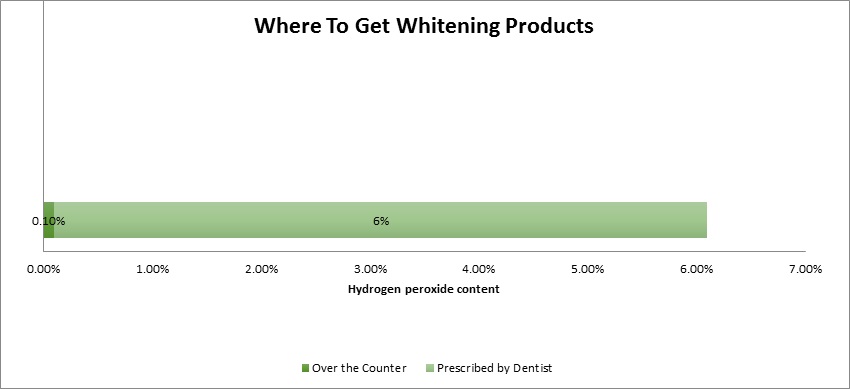What is it?
Tooth whitening is a type of aesthetic dental treatment that lightens the visible shade of your natural teeth, whilst retaining the tooth structure. As oral aesthetics become an increasingly important determining factor in various aspects of the modern person’s life, from one’s career to self-confidence, tooth whitening is burgeoning in popularity at a remarkable pace. This has led to an increase in organised efforts to improve and regulate its safe provision.
Tooth discolouration
Why would you choose to have tooth whitening done? Tooth discolouration is the predominant reason. This is caused by extrinsic and intrinsic factors. Most extrinsic stains can be removed through tooth whitening, but intrinsic stains may be much more difficult to eliminate.
- Extrinsic Stains
These are mostly due to lifestyle and eating habits. For instance, regular intake of foods and drinks like wine, soft drinks and coffee stains enamel, the outer layer of the tooth.
 Smoking is also a major culprit.
Smoking is also a major culprit.
But one thing we cannot avoid is the natural yellowing of our teeth as we grow older. This is because the light-colored outer layer of the tooth becomes thinner as we age, letting the darker-colored interior show through.
- Intrinsic Stains
Meanwhile, intrinsic factors include high fluoride intake or tetracycline use at an early age or a rare dental condition called dentinogenesis imperfecta. Trauma at an early age can also cause white or yellow discolorations on the internal layer of the tooth.
Tooth Whitening Products
Tooth whitening products fall into two main groups. The former group usually contains either hydrogen peroxide or carbamide peroxide, working in similar ways.
- Hydrogen Peroxide
Hydrogen peroxide is mostly used in whitening treatments carried out in-office by dental professionals, ranging in concentration from 0.1% to 6%. How does the process work? Before the product is applied, gel may be applied to your gums or a rubber dam may be used. This is to protect and isolate the soft tissues of the mouth from coming into contact with the active agent. After applying the gel, light or laser may be used to activate the bleaching agent, to enhance the whitening effect.
When delivered by a dental professional, in-office tooth whitening has a low risk, and its systemic effects are no longer considered to be a major safety issue. Here at Ashford Dental, we provide quality in-office whitening treatments, all by certified dental professionals held up to the highest standard. Because your health is our priority.
- Carbamide Peroxide
Carbamide peroxide is sometimes used in at-home whitening treatment courses prescribed and monitored by a dental professional. It is applied using trays, strips or brushes, with a custom-fitted mouthguard to protect your gums. This option is growing more popular as time efficiency and the comfort of home become joint priorities for many. Do note that, as with in-office treatments, care must be taken in order to prevent chemical burn to the gums and mouth.
Whitening treatments sold over the counter must contain less than 0.1% hydrogen peroxide. However according to the Lay Advisory Group of the FGDP(UK), an effective whitening outcome can only be achieved with products that contain or release hydrogen peroxide at 3.6% or more.
Risks
As with all treatments, tooth whitening has its associated risks. It may cause damage to surrounding cells. Besides that, there is a risk of swallowing the treatment gel. In the dental clinic, the close attention of professionals enables these risks to be minimised. There is also more complete provision of precautions and facilities to deal with any mishaps.
Side Effects
Other than risks, tooth whitening also has some side effects that may or may not affect some people. These include elevated teeth sensitivity to hot and cold, and gum irritation. Your dentist is responsible for assessing your oral health status, determining the most suitable treatment for you, monitoring you and following your progress to make sure that side effects are mitigated. This is where we at Ashford Dental come in. Our well-trained, dedicated dentists have accumulated experience in treating patients exactly like you. If you have any queries, please do contact us to find out more about your treatment options and how we can help you achieve the smile of your dreams.
Written for Ashford Dental, by Kai Ng
References:
General Dental Council Publications. Considering Tooth Whitening; 2014 [pdf]. Available at https://www.gdc-uk.org/Newsandpublications/Publications/Publications/Considering%20Tooth%20Whitening.pdf
Ishikawa, M. , Satoh, K. , Miyashin, M. A clinical study of traumatic injuries to deciduous teeth. (3). The influence on their permanent successors. Shoni Shikagaku Zasshi. The Japanese Journal of Pedodontics 1990; 28(2), p.397-406.
General Dental Council Publications. Position Statement on Tooth Whitening UD; 2014 [pdf]. Available at https://www.gdc-uk.org/Membersofpublic/Illegalpractice/Documents/Position%20Statement%20on%20Tooth%20Whitening%20UD%2029.05.pdf
Li, Y. Safety controversies in tooth bleaching. Dent Clin N Am 2011; 55: p255–263.
Tavares M, Stultz J, Newman M, Smith V, Kent R, Carpino E, Goodson JM. Light augments tooth whitening with peroxide. J Am Dent Assoc. 2003 Feb;134(2):167-75.
Floyd R A. Role of oxygen free radicals in carcinogenesis and brain ischemia. FASEB J1990; 4: 2587–2597.
Li Y. The safety of peroxide-containing at-home tooth whiteners. Compend Contin Educ Dent 2003; 24: 384–389.


